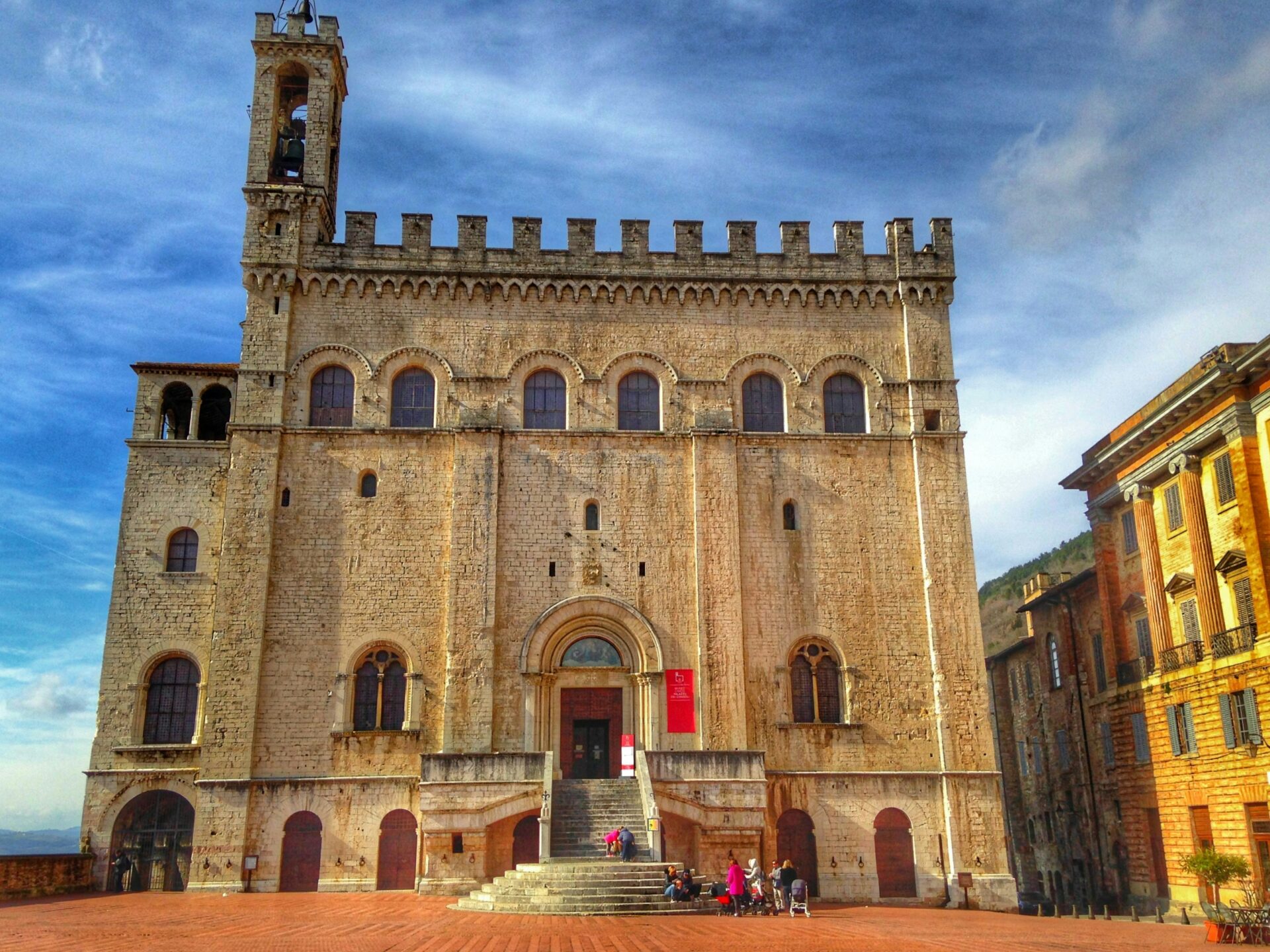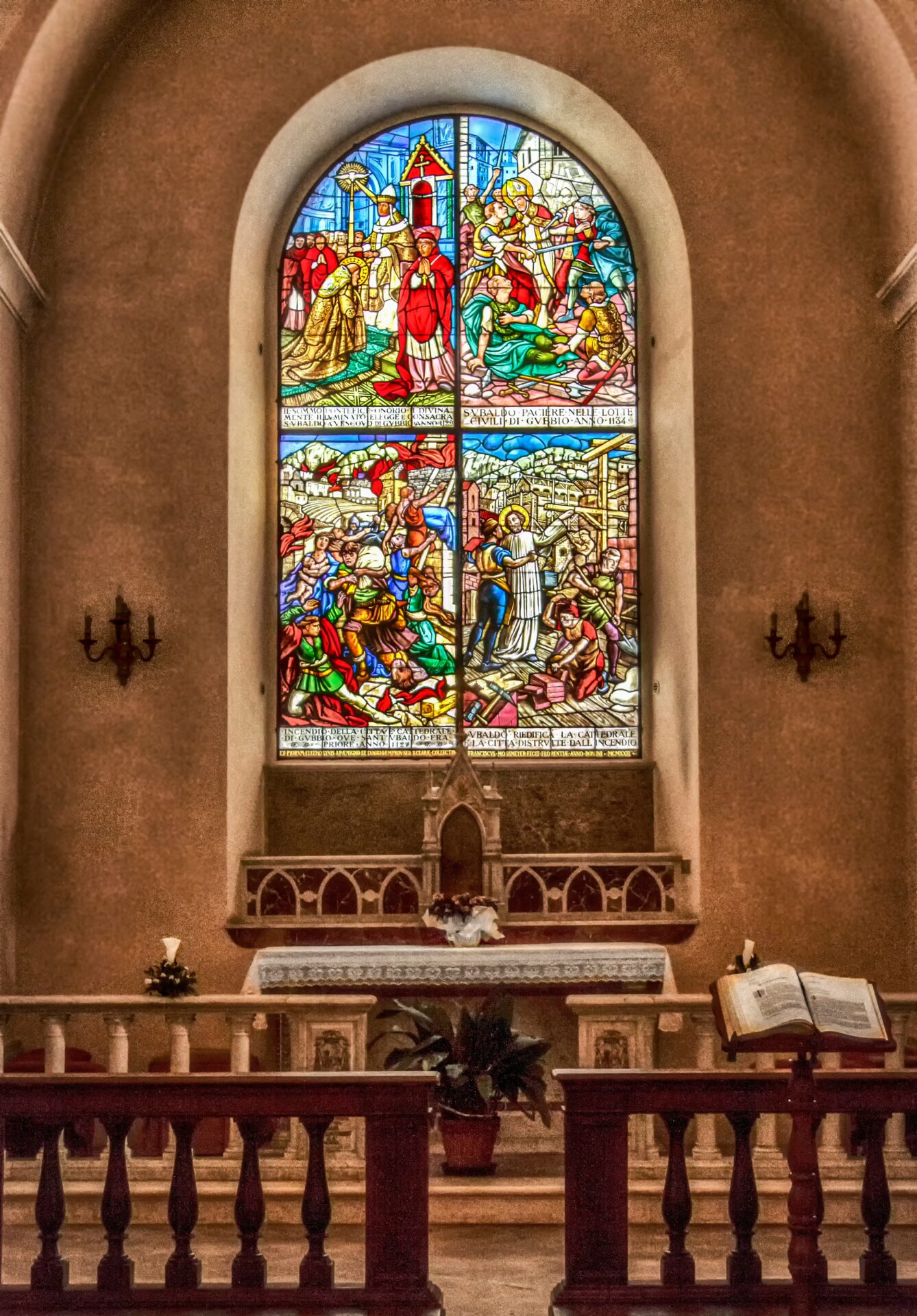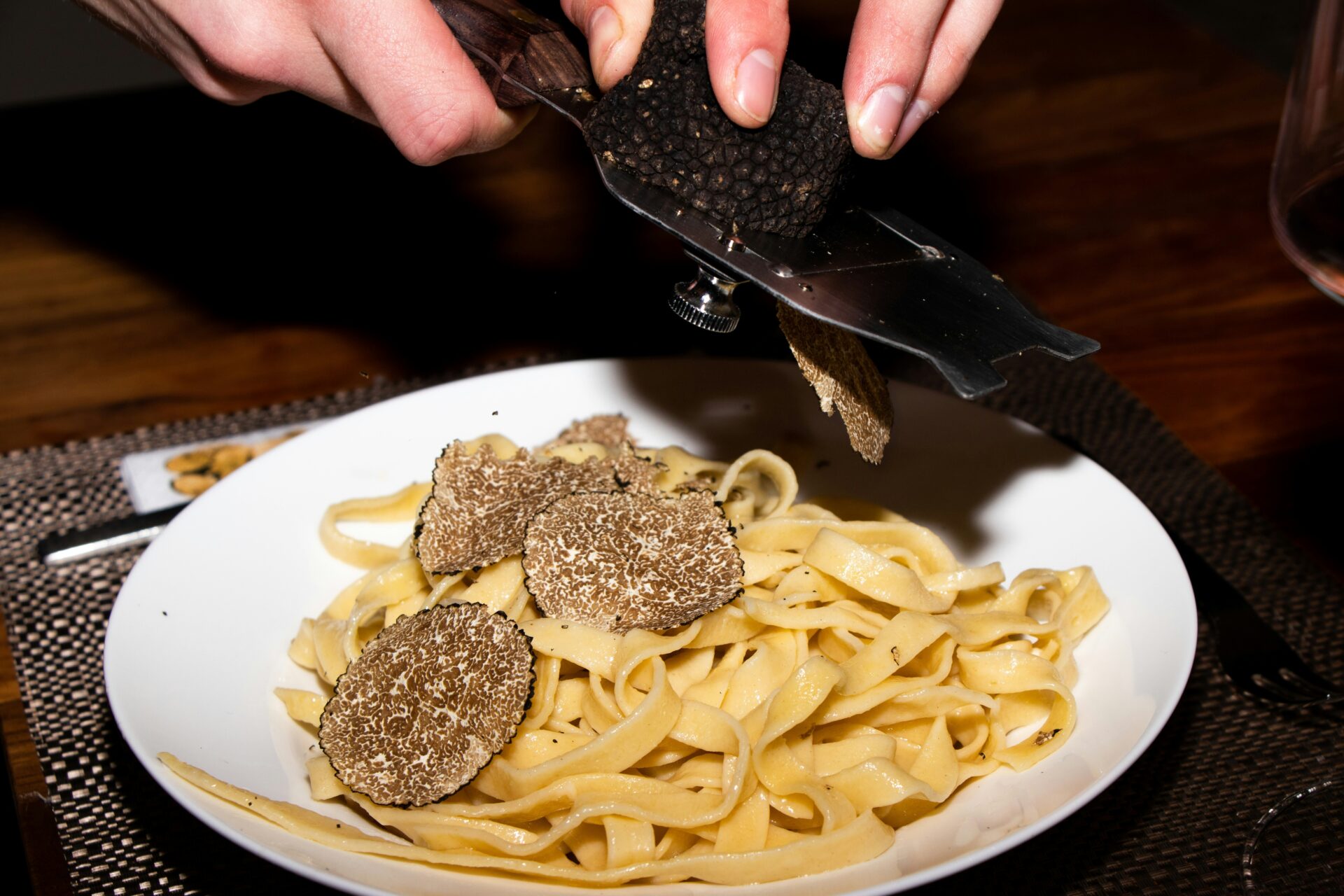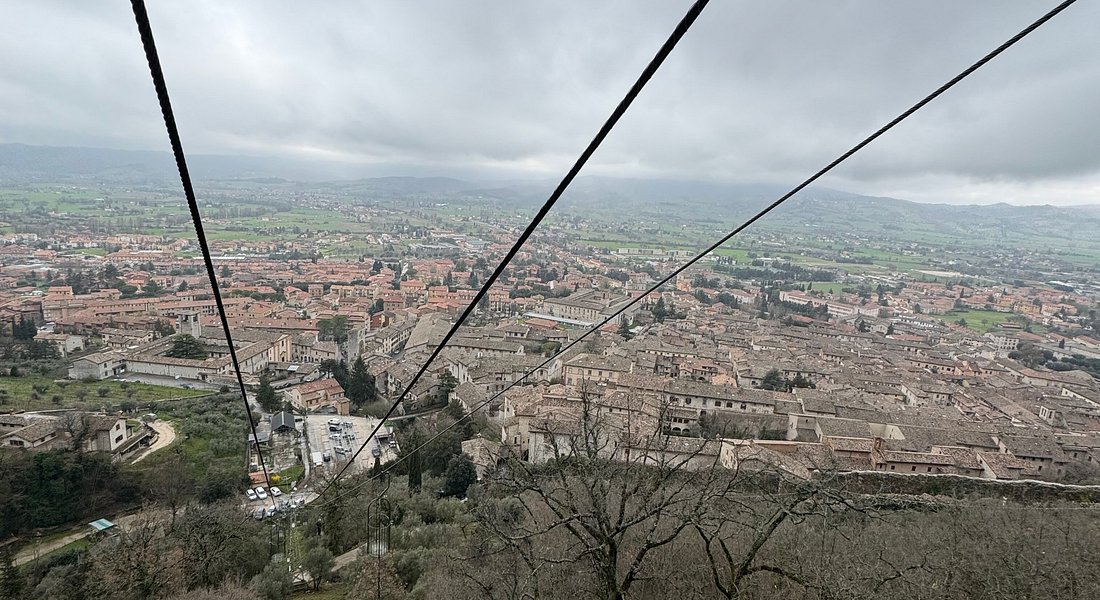Perched dramatically on the slopes of Mount Ingino, Gubbio is one of Umbria’s most enchanting medieval towns. I discovered this hidden gem during my travels through Italy’s “green heart” and was instantly captivated by its uniform gray limestone buildings and perfectly preserved medieval architecture. Gubbio offers visitors a remarkable journey through time with its ancient roots dating back to pre-Roman periods.
Making it one of the best-preserved medieval towns in all of Umbria.
Walking through Gubbio’s narrow streets feels like stepping into a living museum where history unfolds at every corner. The town’s unique uniform appearance comes from its gray limestone construction, creating a distinctive charm that’s both haunting and beautiful. Unlike the more tourist-heavy towns in neighboring Tuscany, Gubbio provides an authentic Italian experience that feels wonderfully undiscovered.
What makes Gubbio truly special is its blend of fascinating history, local traditions, and culinary delights. From the famous Corsa dei Ceri festival to the abundance of prized truffles in local cuisine, there’s something magical about this “Medieval Manhattan” rising from the Umbrian countryside. I’ve found that the best way to experience Gubbio is by taking the quirky cage ride up the mountain for panoramic views, then losing yourself in the medieval streets below.

Discovering Gubbio: A Medieval Gem in Umbria
Nestled on the slopes of Mount Ingino in northeastern Umbria, Gubbio captivated me at first sight with its stone facades and medieval charm. This remarkably preserved town offers visitors a journey through time, from ancient Etruscan roots to its golden age as a powerful medieval commune.
The Enigmatic History of Gubbio
Gubbio’s story begins long before Italy existed as we know it today. The Etruscans first settled this area, leaving behind fascinating artifacts including the famous Iguvine Tablets with their mysterious ancient script.
During Roman times, the town was known as Iguvium and flourished as a strategic settlement. I was amazed to find that you can still see remnants of this era, including a well-preserved Roman theater at the edge of town.
The Middle Ages marked Gubbio’s most prosperous period. By the thirteenth century, it had become a powerful free commune with impressive urban development. This earned it the nickname “Medieval Manhattan” for its ambitious stone towers and imposing buildings climbing the mountainside.

Gubbio’s Historic Center and Architecture
Walking through Gubbio’s historic center feels like stepping into a perfectly preserved medieval world. The town’s distinctive gray limestone buildings give it a unified, dramatic appearance against the backdrop of Mount Ingino.
The heart of Gubbio is Piazza Grande, an impressive suspended square that offers breathtaking views of the Umbrian countryside. I was struck by how this architectural marvel seems to float above the city.
Palazzo dei Consoli, with its imposing Gothic facade, dominates the square. Built in the 14th century, this magnificent building housed the town government during Gubbio’s golden age. Inside, you’ll find the Civic Museum with those fascinating Iguvine Tablets.
Don’t miss the Cathedral (Duomo) and Palazzo Ducale, built by Federico da Montefeltro during the Renaissance period. These structures showcase how Gubbio evolved while maintaining its medieval character.
Unveiling Gubbio’s Towers and Cathedrals
Gubbio’s skyline is defined by its medieval architecture that has stood the test of time. The towers and cathedrals here tell stories of power, faith, and artistic brilliance that shaped this historic Umbrian gem.

Towering Above: Gubbio’s Remarkable Towers
When walking through Gubbio, I’m always struck by the imposing Tower of the Palace of the Consuls. Standing at the heart of the city, this 13th-century tower offers breathtaking views of the surrounding Umbrian countryside.
The Palazzo Comunale’s tower rises dramatically from the main square. I recommend climbing to the top for panoramic views that put the town’s medieval layout into perspective.
These stone sentinels weren’t just for show. During medieval times, they served as lookout points and symbols of wealth and power for noble families. The taller your tower, the more important your family!
What makes Gubbio’s towers special is how they blend seamlessly with the town’s stone buildings, creating that distinctive “Medieval Manhattan” skyline that earned the town its nickname.

Divine Designs: The Cathedrals of Gubbio
The Duomo (Cathedral) of Gubbio is a must-visit on any tour of the town. Built in the Gothic style during the 13th century, its simple yet elegant façade hides a treasure trove of religious art inside.
I was particularly moved by the beautiful stained glass windows that cast colorful light across the stone interior. The cathedral houses several important works of Gothic art that showcase the religious devotion of medieval Gubbio.
The Church of St. Francis offers another spectacular example of religious architecture. Its design reflects the transition from Gothic to Renaissance styles that was happening across Italy.
What I find most fascinating about Gubbio’s religious buildings is how they reflect the town’s prosperity during the Middle Ages. The detailed stonework and artistic commissions weren’t just acts of faith but statements of civic pride.

Cultural Wonders and Local Traditions
Gubbio’s cultural identity shines through its well-preserved medieval traditions and distinctive culinary heritage. The town’s festivals reveal the deep connection between its history and present-day community spirit.
Festivals and Social Order in Gubbio
The most famous celebration in Gubbio is the Festa dei Ceri (Race of the Candles), held every May 15th. I was amazed to witness this 900-year-old tradition where three teams carry massive wooden “candles” weighing nearly 400 kg each up Mount Ingino to the Basilica of Sant’Ubaldo.
The social structure of medieval Gubbio lives on through these festivals. The town divides into quarters, each with distinct colors and emblems that locals proudly display. During my visit, I noticed how these traditions strengthen community bonds.
Palio della Balestra (Crossbow Tournament) is another spectacular event held on the last Sunday of May. Competitors dress in medieval costumes and compete using traditional wooden crossbows in Piazza Grande.

Traditional Gastronomy: A Taste of Gubbio
Gubbio’s culinary scene makes it a true gastronomic haven in Umbria. The town’s cuisine relies on simple, high-quality ingredients that showcase the region’s agricultural bounty.
I couldn’t resist trying the crescia, a flatbread typically stuffed with local meats and cheeses. It’s perfect for a quick lunch while exploring the medieval streets.
Game meats feature prominently in Gubbio’s traditional dishes. The strangozzi al tartufo (handmade pasta with truffle) changed my understanding of Italian pasta completely!
Local specialties include the friccò (meat stew), and during winter, you’ll find hearty lentil soups that warm both body and soul. The local olive oil deserves special mention – I brought home a bottle of this liquid gold.
Many restaurants in Piazza Grande offer stunning views alongside authentic dishes, making meals here a feast for all senses.

The Ultimate Traveler’s Guide to Gubbio
Gubbio offers a perfect blend of medieval charm and modern conveniences for travelers. From cozy hotels nestled in historic buildings to efficient transport options and expert-led tours, this guide covers everything you need for an unforgettable Italian adventure.
Finding the Perfect Accommodation
Gubbio’s accommodation options range from budget-friendly to luxurious, with most concentrated in or near the Centro Storico. I’ve found that staying within the historic center provides the most authentic experience, with medieval buildings converted into charming boutique hotels.
Hotel San Marco and Relais Ducale offer mid-range comfort with stunning views of the surrounding landscape. They’re perfectly positioned for exploring the main attractions on foot.
For budget travelers, B&Bs like La Casetta del Borgo provide homey atmospheres and local insights from friendly hosts. Many include breakfast featuring local specialties.
If you prefer luxury, Bosone Palace Hotel occupies a 14th-century mansion with elegant rooms and modern amenities. Book accommodations well in advance during May for the famous Festa dei Ceri festival when rooms fill quickly.

Navigating Around: Transport Tips
Getting to Gubbio requires some planning as the city isn’t connected to Italy’s main rail network. The closest international airports are in Perugia (40 minutes by car) and Ancona (90 minutes).
From Perugia, regular bus services run to Gubbio daily. The journey takes approximately 50 minutes and offers scenic views of the Umbrian countryside.
Within Gubbio itself, walking is the best option for exploring the historic center. The city is compact though hilly, so wear comfortable shoes!
For those who prefer not to climb, the Funivia Colle Eletto cable car connects the lower town to the Basilica of Sant’Ubaldo. It costs around €6 round-trip and offers spectacular panoramic views.
Taxis are available for longer journeys or day trips to nearby towns. I recommend arranging these through your hotel for reliable service.

Join the Adventure: Guided Tours in Gubbio
Private walking tours with official guides provide the richest experience of Gubbio’s history and hidden gems. Most tours last 2-3 hours and cover major sites like Palazzo dei Consoli and Roman Theater.
I particularly enjoyed the “Secrets of Medieval Gubbio” tour, which explores lesser-known corners of the city and includes fascinating local legends. These small-group experiences typically cost €20-30 per person.
For food enthusiasts, culinary tours combine history with tastings of truffle dishes, local wines, and traditional sweets. Book these in advance as they often sell out.
Self-guided audio tours are available through apps like Gubbio Tour Guide, offering flexibility to explore at your own pace. The app includes GPS-activated content about 15+ attractions.
Day tours from Perugia or Assisi typically include transportation and guided visits to Gubbio’s main sights. These are convenient if you’re short on time or staying elsewhere in Umbria.

Relish the Flavors of Umbria: Wine and Dine in Gubbio
Umbria’s culinary landscape offers a feast for the senses with its distinctive medieval flavors and biodynamic wines. During my visits to Gubbio, I’ve discovered that food here is more than sustenance—it’s a window into the region’s rich history.
Savoring Umbria’s Wine Heritage
When exploring Gubbio, I always make time for wine tasting at nearby vineyards like Tenuta Baroni Campanino, known for exceptional biodynamic wines. The terroir of Umbria produces distinctive varieties that differ from their Tuscan neighbors like Chianti and Montepulciano.
I recommend booking a guided wine tour to fully appreciate the region’s viticultural traditions. Most tours include pairings with local specialties such as bruschetta drizzled with Umbria’s famous olive oil.
The wine culture here dates back to Etruscan times, giving each sip a taste of history. Don’t miss trying Sagrantino, Umbria’s bold red wine that’s unique to this region and perfectly complements the hearty local cuisine.

Delight in Gubbio’s Culinary Landscape
Gubbio’s food scene captures the essence of medieval Umbrian cuisine. Dishes here have remained unchanged for centuries.
I’ve found the best way to experience this is through a cooking class. In the class, you’ll learn to make hand-rolled pasta and traditional sauces.
Local specialties worth trying:
- Crescia al formaggio – a cheese-filled flatbread
- Friccò – a savory meat stew with chicken and lamb
- Black truffles – often featured in pasta dishes and bruschetta
Truffle hunting excursions offer a unique adventure. The excursion culminates in a meal featuring your foraged treasures. I joined one last spring and found it to be the highlight of my trip.
Small family-run restaurants called “trattorias” often serve the most authentic dishes. For the full experience, pair your meal with local wine. Then, finish with a drizzle of aged balsamic vinegar over gelato.

